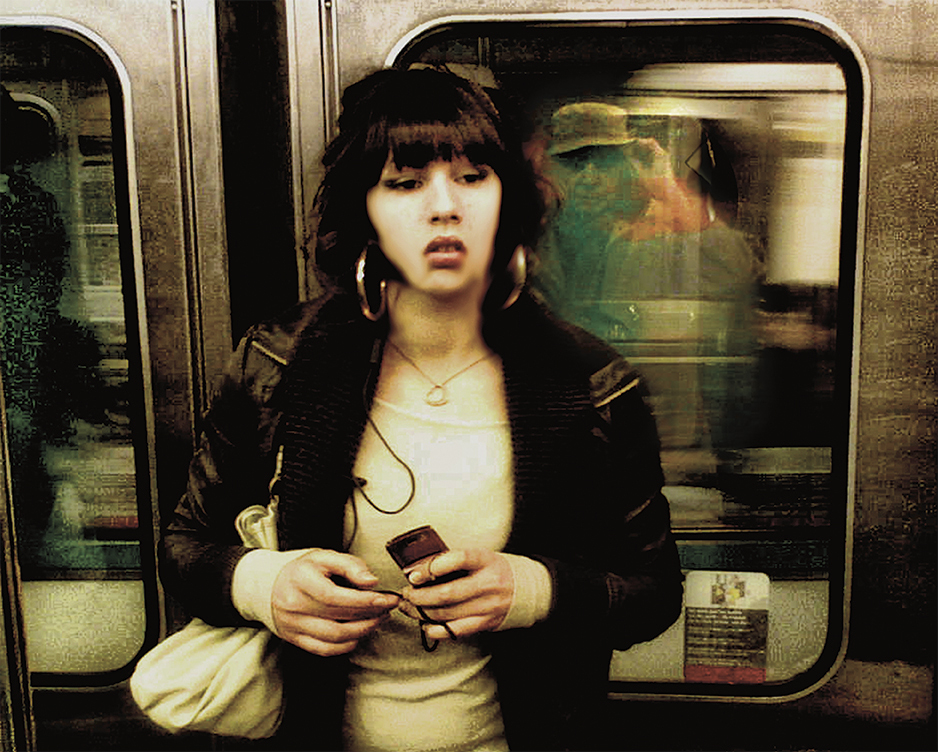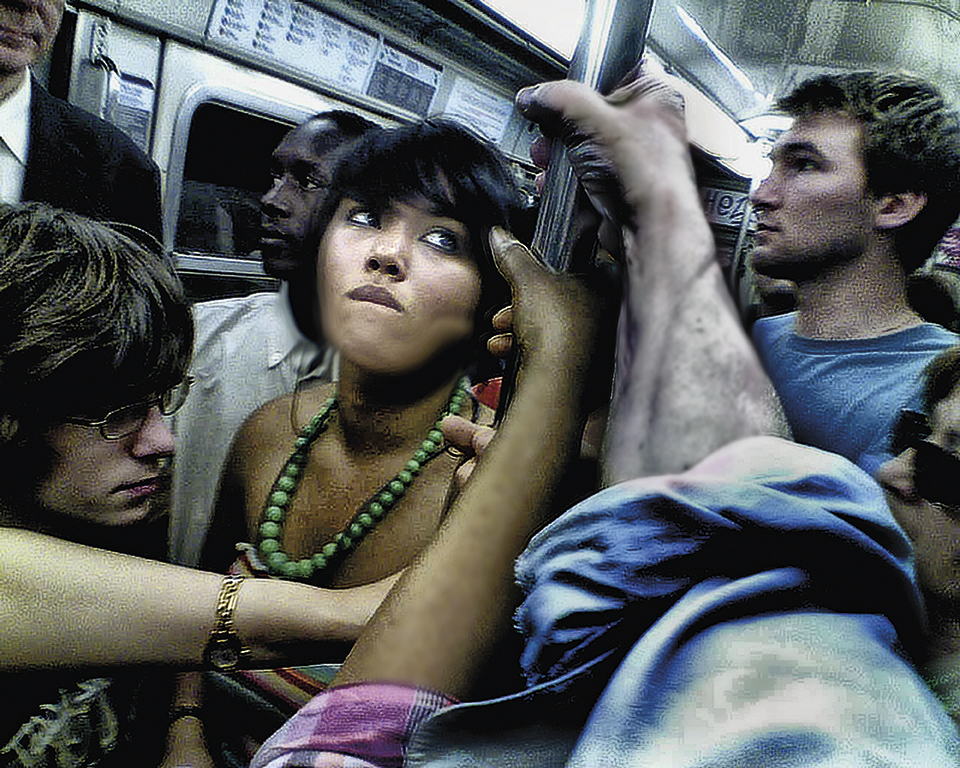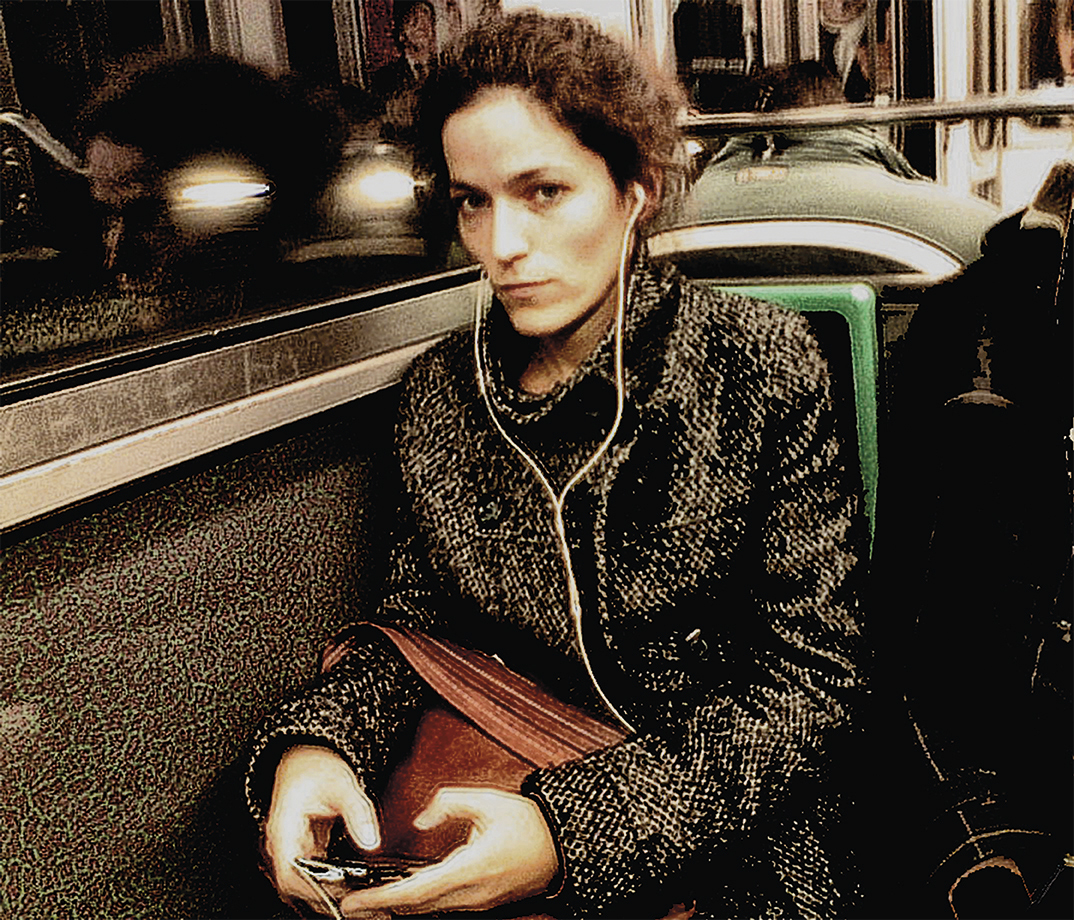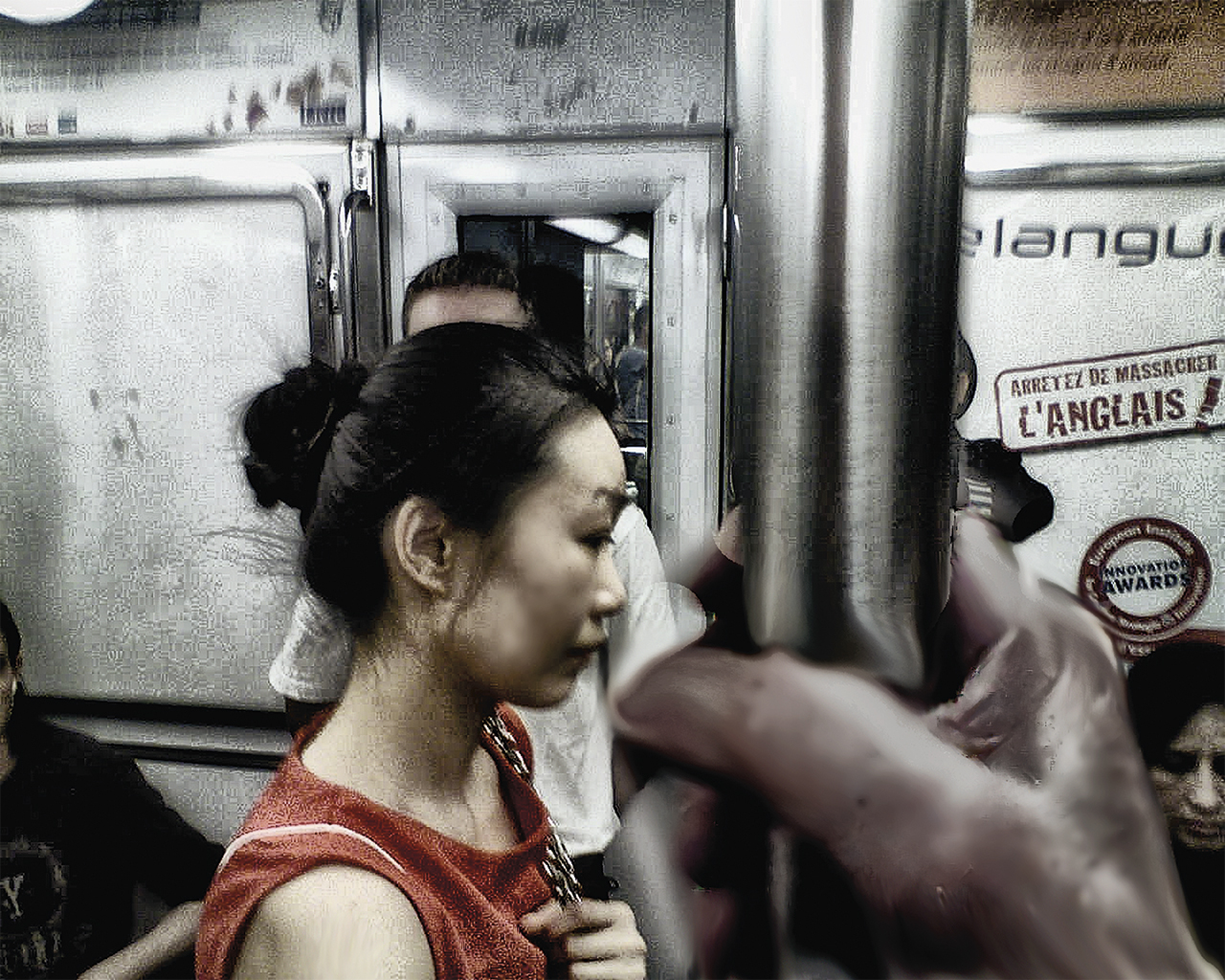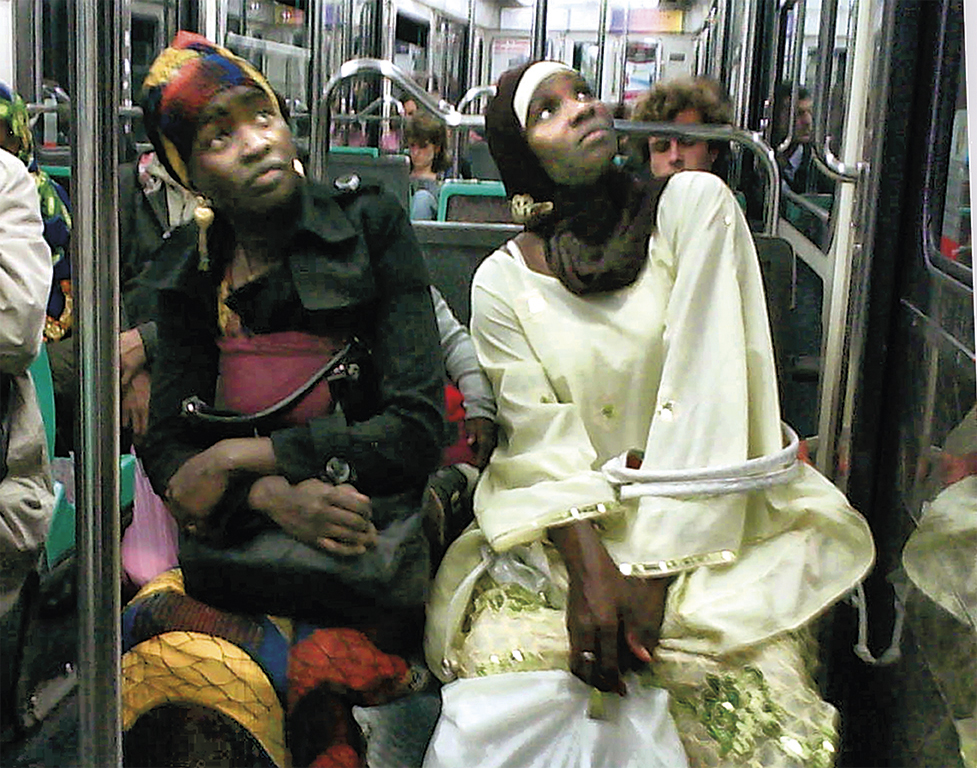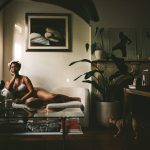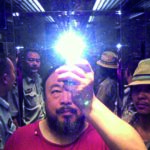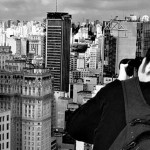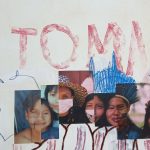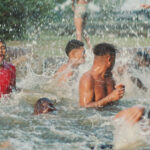The Last Trip
Publicado em: 12 de February de 2014French filmmaker CHRIS MARKER rides the Paris Metro in search of the faces of passengers.
Chris Marker’s series of photographs Passengers, taken between 2008 and 2010, focuses on women, relegating men to the role of extras. Amongst the tired faces and bodies of these lone women on the Paris metro, the main characters are the sleeping beauties. At the mercy of the photographer’s lens and oblivious that they are being used as models, interaction with the observer is totally absent. And only a few of those who are awake look at the camera. Most are self-absorbed. Many are using earphones, looking at their cell phones or reading – unaware of what is going on around them. Only two girls return the photographer’s gaze naturally. When they realise that their image is being stolen, the women’s expressions vary: from rebuke to protest, surprise to indignation, passing through anger, defiance and indifference – only one of them smiles.
Starting as simple, everyday snapshots, they are then treated digitally, to transform them from their initial raw state. De-saturated colours, pixilation and blurring give an abstract look to some of the images.
The Truth of the Camera
The occasional interaction with the observer and the extent of their further treatment distinguish Marker’s images from their illustrious predecessors, shot by Walker Evans in the New York subway between 1938 and 1942. The two series have the same subject in common – “people’s faces in naked repose” in the words of Evans. But he, unlike Marker, tried to avoid any interaction between the photographer and his subjects.
Evans adopted Paul Strand’s approach, whose portraits of ordinary people on the streets of New York in 1915 and 1916 were taken without them being aware that they were being photographed. Strand made use of a camera with a false lens mounted at a 90-degree angle to the real one. He aimed the false lens in the direction he was facing and the real one stuck out under his arm is toward the person. Strand adopted a rigid aesthetic and moral stance in what he called “straight photography”, determined by his need to have “real respect for what is in front of” the camera. For him, “the person or object is not an excuse, but the real reason for the photograph.”
Evans rebelled against the posed studio portrait. He wanted to portray people as they were, not tidied up and made up, in a style he called “documentary”. He also worked with a hidden camera, operated by a flexible cable inside the sleeve of his coat. He considered his photographs “as close to a pure record as the equipment, the materials and the practical information available to the photographer could achieve,” but acknowledged that he only partially achieved that goal. He admitted that his photos were edited – chosen and organised “for practical reasons related to the layout of the page, the tone of the image and the inferred interest in the portrait or in the face, without aesthetic or subject-related considerations.” Yet he believed that even when put into a sequence, they still preserved something casual. In retrospect, he wrote that he was “a penitent spy and an apologetic voyeur.”
Strand and Evans had the same purpose: to “capture life unaware,” as was proposed by Dziga Vertov in 1924. When conceptualising the “cine-eye”, Vertov wanted to show the truth on the screen, filming “people without masks, without makeup, [seeking] to capture them through the eye of the camera at a moment when they are not acting, to read their thoughts, laid bare by the camera.”
Strand, Vertov, Evans – none of them fully succeeded in demonstrating their theories through their photography or films. They found, through experience, how difficult it was to achieve this step. As with direct cinema, which emerged in the late 1950s, the notion that unperceived observation results in images that can dispense with any form of intervention oft en results in simplistic interpretations.
Strand’s creed was aesthetic as well as moral. He sought to express himself “… through a range of almost infinite tonal values which lie beyond the skill of the human hand.” Evans, for his part, worked with ambient light and was forced to use wide-angle lens and long exposure times, which produced negatives which were hard to print. Taken blindly, with a camera hidden in his coat with the lens poking out between the buttons, his photos needed to be cropped before they were published.
For Vertov, setting the scene was crucial. His clandestine, natural images are less common than his re-enactments, shot with abundant use of optical trickery. Apart from The man with the camera (1929), his films are an exercise in persuasive political propaganda which calls into question their attempt at direct transposition of reality onto film. Evans’ “straight images” and Vertov’s “truth on the screen” were never more than unattainable ideals.
Thief of Brief Moments
Although it is natural to include Marker’s photographs in the Paris metro in the same lineage, their relationship is, in reality, confined to the subject matter. They may have subject and technique in common but, unlike Evans, Marker is not a “penitent spy and an apologetic voyeur.” In fact he began taking his photos with a wrist camera and moved on to use other gadgets to sneak images of female faces. Yes, it was robbery, he admitted, but he did it to give women “their best moment, often imperceptible in the flow of time, sometimes just that 1/50 of a second that makes them truer to themselves.” Marker steals moments, is aware of what he does and does not discard the photos where his subject catches him in the act.
An essayist and travelling storyteller with many other skills, Marker was devoted to the female face from early on in his career. This devotion is evident, for example, in La Jetée [The Pier] (1962), a realistic science-fiction film made with black and white stills. And it can also be seen in The Koumiko Mystery (1965), a documentary filmed during his first trip to Japan.
Setting aside his initial goal to photograph the Tokyo Olympics, in Koumiko Mystery Marker focuses on a single female face – that of secretary Koumiko Muraoka. As the main character, her narration accompanies the final sequence of her images on the subway.
The only image in movement in La Jetée is of the face of a woman waking up, a series of close-ups at the end of the film, merged into a sequence. Sleeping beauty wakes up and looks straight at her observer. For a few seconds, the observer and the cinema have the gift of making her stir, confirming that she is alive.
In La Jetée, a prisoner finds the ability to travel back in time, starting from a subterranean Paris destroyed by World War III. The power of images, which have obsessed him since he was a boy, allows him to “imagine or dream” other times, and to insert himself into those moments. In his travels into the past, he encounters the woman whose face is etched into his memory. When he is offered a place in the “pacified future”, he asks instead to return to the world of his childhood. And there, on the terrace of the airport where he saw the woman for the first time, he runs toward her and understands “that one cannot escape time, and that moment, by which he never ceased to be obsessed, was the moment of his own death.” The magnetic force of the woman’s face in La Jetée confronts man with his own mortality.
Back to the Present
More than four decades later, while travelling in the Paris metro and eying those sleeping beauties, we can imagine that the relationship between these two moments did not go unnoticed by Marker. Like his character, he is obsessed with the female face. Photographing or filming in the four corners of the world, encountering women and taking close-ups of their faces, suggests that the relationship between photography and death was never absent from his thoughts.
“Photography is hunting,” an amateur photographer says off screen in If I had Four Dromedaries (1966), another film made entirely from still photographs. “It is the hunting instinct without the desire to kill. It’s like hunting angels… You track, you aim, shoot and – click! Instead of death, we eternalise someone.” Another enlightening piece of narration comes soon after: “And behold, one more thing. A sculptor immortalises a certain face with a certain look. In photography you immortalise your own gaze towards that look.”
The photographer-narrator continues, commenting on a picture of a Rolleiflex camera: “There is life and there’s its double – the photo belongs to the world of the double. And, just there, right there, there’s a trap. Gazing at so many faces, you begin to feel that you are part of their lives and their deaths as living faces, human faces. It’s not true though: if there is something you participate in, it’s in your own life and death as images…”
This enigmatic final sentence seems to contradict the earlier statement that “instead of killing” the photographer “eternalises the subject.” The intention of the text, however, is to assert that the photograph perpetuates the eye of the beholder. And with one sentence in the narration of Marker’s second film, Statues Also Die (1953), co-directed by Alain Resnais, he confirms this view: a photograph will only die “when the live eye which gazes upon it disappears.”
The Time of a Photo
Two sequences foreshadow what Marker began on the Paris metro, 26 years later. They were shot in Finland in 1952 and in Guinea- Bissau and Japan and are included in Without Sun (1982). The first is of women’s faces, the second of passengers in general.
In a letter read in off by a female voice, serving as the narration, the writer asks: “How to film women in Bissau?” And this possible Marker alter-ego continues: “The magic of the lens seemed to work against me. It was in the markets of Bissau and Cape Verde where I found my gaze returned with such equality and this series of images is so close to the ritual of seduction: I see her… she sees me… she knows that I see her. She offers me her gaze, but from an angle that does not seem to speak directly to me. And finally, a true direct glance, which lasted just half a second, the time needed to take a photo.”
In the Tokyo subway, the epistolary narrative goes on to say that Marker encountered “faces caught in passing, as different and precise as groups of [musical] instruments.” There are those who look straight into the lens and then look away, or who raise their eyes and look straight into the camera. Some yawn, nod off , read the newspaper, are wearing surgical masks, playing with a Rubik’s cube. But subway cars are really populated by people who sleep, and their images are interspersed in the editing with flashes from video games and samurai fights, the close-up of an eye and an owl inscribed with ideograms – possible representations of thoughts and dreams. Marker’s freedom with visual language reaffirms his distance from straight photography.
At the end of Without Sun, Marker shows close-ups of the Guinea market woman. The same one who participated in the ritual of seduction by looking directly at the observer. The framing is the same, but now processed by a synthesiser. The resulting image is solarized, almost pop, as in video art. Full eyes and lips outline a smile. The documentary aspect of the filmed record is replaced by a liquefied pictorial representation, in two tones. Marker, as always, redoes, recreates, interrogates his images.
After his trip around the world, Marker travelled the Metro in his own city and left this farewell trip as his testament, in which beauty and affection are submerged in the desolation of the passengers. Frozen in the photographs in the series Passengers, the sleeping beauties do not awake. They belong to the past. They are out of the flow of time. An excerpt from If I had four dromedaries can serve as comment on these pictures: “There are those who live with death, close to it every day. Sometimes we see that rictus in their face, that inverted smile we see on the top of funeral urns.”
These moments given to Marker to observe those Metro passengers preceded his own final moments in 2012. He continued to photograph female faces almost to the end. Our look at his look perpetuates it.///
images: © Peter Blum Gallery, Nova York
Chris Marker (Paris, 1921-2012) was a film director, photographer and writer. La Jetée [The Pier] (1962) is one of his best known films.
Eduardo Escorel is a film director. He directed Paulo Moura – Alma brasileira [Paulo Moura – a Brazilian Soul]. He writes a cinema blog for the Piauí magazine.
///
Get to know ZUM’s issues | See other highlights from ZUM #5 | Buy this issue


